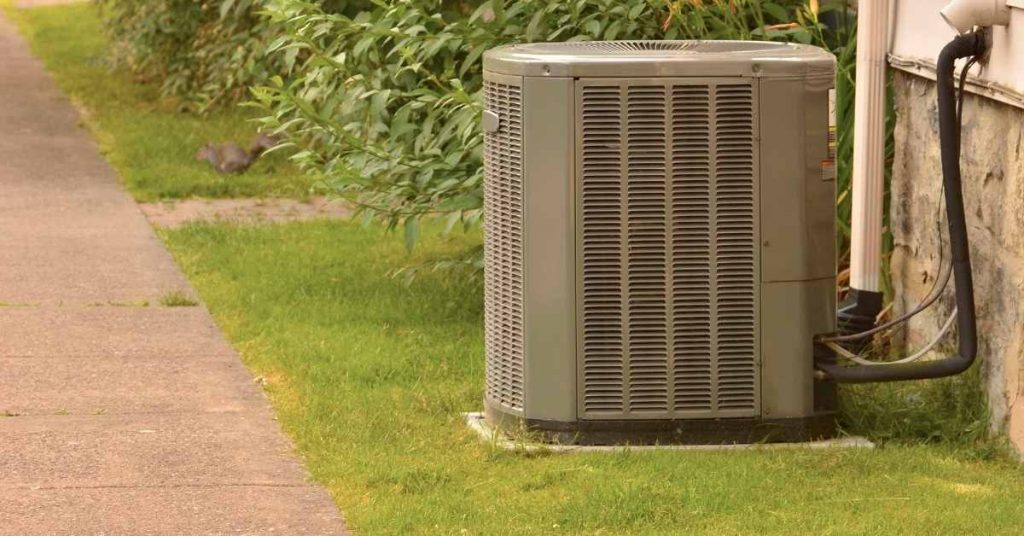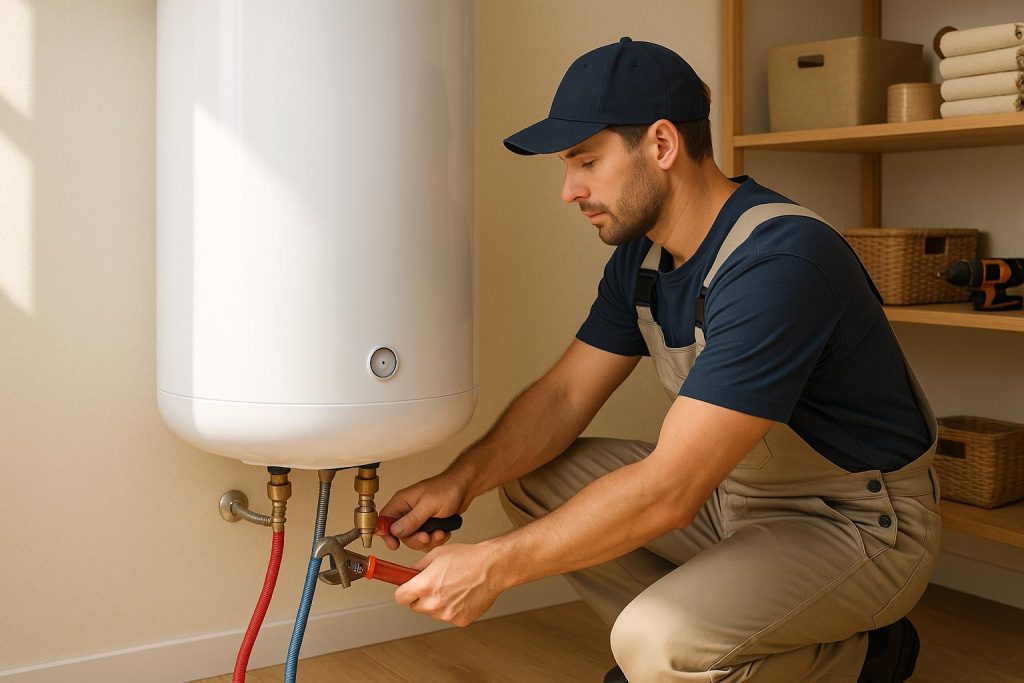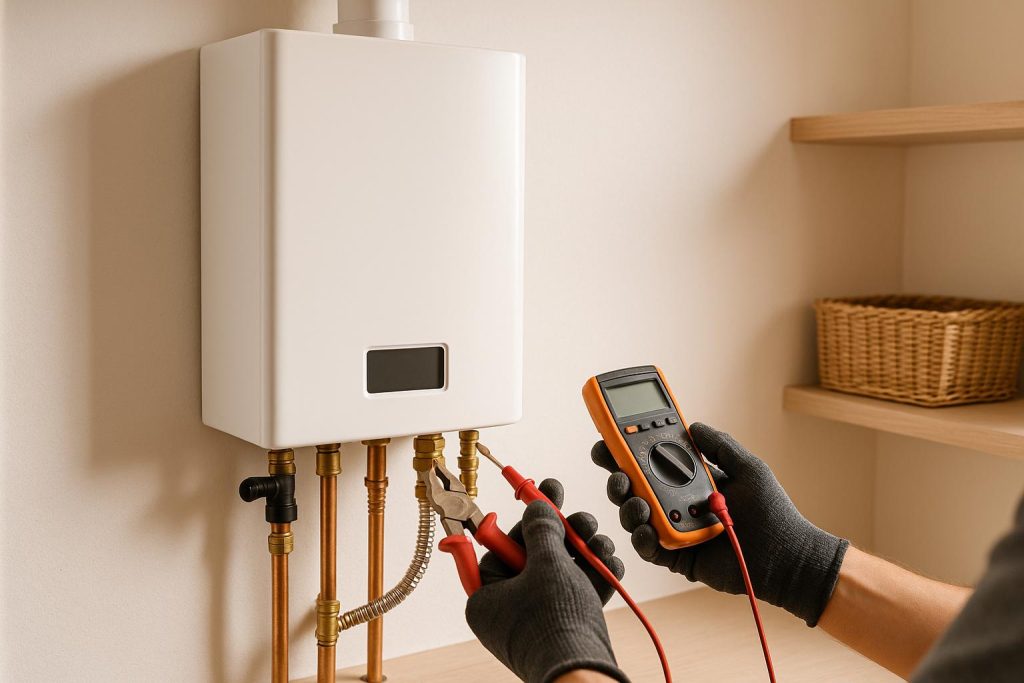
The outside unit of an air conditioner, often referred to as the condenser unit or the condenser coil, plays a crucial role in the cooling and heating process. Its primary functions can be summarized as follows:
- Heat Release: The primary function of the outside unit is to release heat. It receives high-pressure, high-temperature refrigerant vapor from the indoor evaporator coil. This refrigerant carries the heat absorbed from the indoor air.
- Condensation: In the outside unit, the hot refrigerant undergoes a phase change, transitioning from a gas to a high-pressure liquid. This change of state is called condensation and occurs as the refrigerant releases the heat it absorbed from the indoor space.
- Heat Dissipation: To facilitate condensation and release heat effectively, the outside unit contains a coil and a fan. The coil is designed to dissipate heat rapidly, while the fan helps in this process by blowing air over the coil.
- Pressurization: The compressor, a critical component of the outside unit, pressurizes the refrigerant, raising both its pressure and temperature. This high-pressure, high-temperature refrigerant is then ready to release heat in the condenser coil.
- Cycling: After releasing heat in the outside unit, the refrigerant returns to the indoor unit as a high-pressure liquid, ready to absorb more heat from the indoor air, thus continuing the cooling or heating cycle.
Is It an AC or Heat Pump Outside Unit?
The outside unit could also be a heat pump instead of a conventional air conditioner. Unlike a standard air conditioner, a heat pump will cool the house during summer and also heat it during winter.
The outside AC unit does not control heat. That is done by a thermostat located inside the house. If your thermostat is set to “heat” and the outside unit is running, you indeed have a heat pump and not a standard AC which would be paired up with a furnace.
During the months of winter when you need to heat your house and not cool it, the outside unit is usually off (fan doesn’t run). Heating is supplied by a furnace. If the outside unit runs throughout the year then you indeed have a heat pump.
Just like a standard AC, the outside unit of a heat pump is called a condenser unit. During summer, it helps to release heat to the surround while during winter it helps to extract heat from the surrounding air.
How the Outside Unit of an AC works

In air conditioning, we use a refrigerant to transfer heat from inside the house to the air outside the house. The refrigerant is circulated between the inside and outside AC units where it changes state form from gas to liquid and back to liquid again.
Ideally, refrigerants have a low boiling point and high latent heat of vaporization. Since AC components are connected together using copper tubes, the system is close-looped which increases its efficiency.
As I already mentioned, the outside unit is made up of 2 components, the compressor and the condenser coil. Let us see how each works and their contribution to the air conditioning process.
1. Compressor
As its name implies, the function of a compressor is to compress the refrigerant gas coming from the evaporator coil before it enters the condenser coil.
Since the condenser coil is normally in the form of a cube, the compressor is usually located inside the cube at the bottom. A condenser fan is then installed at the top.
To understand what happens inside the outside AC unit, you must as well understand what goes on in the inside unit.
The refrigerant enters the evaporator coil as a cold liquid. It quickly absorbs heat from the warm indoor air and cools it in the process.
After absorbing enough heat from the indoor air, the refrigerant vaporizes (remember I said it has a low boiling point). It is in that evaporation process that the refrigerant takes with it heat from the indoor air and enters the compressor as a gas.
The refrigerant needs to lose the heat is has absorbed from the indoor air so that it can go back inside the house for more cooling. And that is where the outside unit comes.
Although the refrigerant gas is hot, the outside air is hot as well since that would be during summer. Remember that for heat to be transferred between 2 mediums, there needs to have a temperature differential.
The principle behind air conditioning is actually the fact that heat is transferred from a point of high concentration to a point of low concentration.
That is why we need a compressor. You see, when you compress a gas, it is not only its pressure that increases, but also its temperature.
2. Condenser Coil
The refrigerant gas therefore leaves the compressor as a high-pressure superheated gas. At that point, the temperature of the gas is higher than that of the surrounding air hence heat transfer is possible.
As the refrigerant moves through the condenser coil, a fan blows cooler air over the coil. The cooler air absorbs heat from the refrigerant until the refrigerant turns from gas to liquid.
The process of turning a fluid from gas to liquid is called condensation, probably the reason the coil is known as a condenser coil.
The outer shell of a condenser coil is made of metal fins similar to those of a car’s radiator. These fins helps in the dissipation of heat to the surrounding. When you stand very close to the unit during summer, you will feel hot air being blown your way.

The refrigerant is then pushed out of the condenser coil but just before it enters the evaporator coil it goes through an expansion valve.
The function of the expansion valve is to reduce the pressure of the refrigerant. By reducing the pressure of the refrigerant, its temperature will also drop dramatically.
At that time the refrigerant is ready to enter the evaporator coil and remove more heat from the indoor air. The cycle is repeated over and over again until the house is sufficiently cooled.
Outside Unit of a Heat Pump
The outside unit of a heat pump looks very much like that of a standard air condition and even works the exact same way during cooling. The process is however a little different when the heat pump is used to heat the house.
Heat pump’s outside units are equipped with a reversing valve. As its name suggests, a reversing valve simply reverses the direction of flow of the refrigerant.
Instead of the refrigerant flowing from the compressor to the condenser coil and then the evaporator coil, it flows from the compressor then evaporator coil and finally condenser coil.
Due to that change in direction of flow of the refrigerant, an expansion valve installed just before the condenser coil ensures that the refrigerant entering the coil is way colder than the outside air.
Because of that difference in temperature, the refrigerant (now a liquid) will absorb thermal heat from the surrounding air (even if it is cold outside) until it evaporates.
The refrigerant vapor then enters the compressor where it is compressed resulting in a high-pressure superheated gas. That is the heat used to heat the house.
The hot gas enters the evaporator coil inside the house where the cold indoor air absorbs heat from the refrigerant and in the process heats the house.
After losing heat to the indoor air, the refrigerant turns back to its liquid state and exits the evaporator and enters the condenser coil. The process is repeated over and over until the house is sufficiently heated.
Conclusion
And basically that is what the outside unit of an air condition does. As I had mentioned, if you have a packaged unit, all the air conditioning steps will take place inside the same unit, which is usually installed outside on a slab or at times on the roof of the house.





